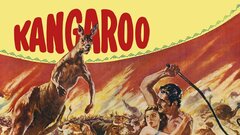So striking in appearance that Technicolor inventor Herbert Kalmus was said to have used her red-haired and green-eyed image to promote his creation, Maureen O'Hara was an Irish-born actress whose versatility allowed her to move gracefully from dramas to comedies and even period adventures. She was a favorite of director John Ford, who cast her in five of his films, including "How Green Was My Valley" (1941), "Rio Grande" (1950) and "The Quiet Man" (1952).
Her co-star in two Ford films was John Wayne, and their on-screen chemistry lead to several collaborations; she was also well-paired with James Stewart, with whom she appeared twice. She retired in the early 1970s and enjoyed a successful second career as a magazine publisher and later the first woman president of an airline company. After retiring from the screen for the second and final time in 2000, O'Hara lived a peaceful life under her death on October 24, 2015 at the age of 95.
Born Maureen FitzSimmons in Ranelagh, a suburb of Dublin, on August 17, 1920, she was one of six children born to Charles Stewart Parnell FitzSimmons (one of the owners of the Shamrock Rovers football club) and opera singer Marguerita Lilburn; three of her siblings, brothers James and Charles and sister Margot, would also become actors. O'Hara wanted to follow in her mother's footsteps, and thus, was accepted into Dublin's prestigious Abbey Theatre at the age of 14. Stage roles and appearances on Irish radio soon followed.
At age 18, she traveled to London for bit parts in two films, "Kicking the Moon Around" and "My Irish Molly" (both 1938). While in London, she was offered a screen test, which came to the attention of acclaimed actor-producer-director Charles Laughton, who was casting for roles in "Jamaica Inn" (1939), a new period drama he was making with Alfred Hitchcock. Laughton became convinced of O'Hara's screen presence after watching her test, and offered her a seven-year contract with his production company, Mayflower Pictures. He also suggested she change her surname to the more marquee-friendly "O'Hara."
Their first collaboration would be "Jamaica Inn," an adaptation of the Daphne du Marier story of a young orphan (O'Hara) who discovers that her uncle is the leader of a gang of pirates. Its success led to "The Hunchback of Notre Dame" (1939), with Laughton as Quasimodo and O'Hara as Esmeralda, the fiery gypsy he loves. Her performance would soon establish her screen persona as a fiercely independent woman who could hold her own with any man.
While traveling aboard the Queen Mary to film "Hunchback," O'Hara met and was wooed by British director George Hanley Brown. The couple married aboard the ship, but the union was annulled just two years later. Her career hit a slight lull in 1940 when Laughton sold her contract to RKO due to the outbreak of World War II, which made filming in London impossible. But in 1941, director John Ford gave her career a boost by casting her as Angharad, the strong-willed female lead in his stirring family drama "How Green Was My Valley." The film was such a hit and O'Hara such an integral part of its success that her stardom - mainly as a WWII pin-up - happened overnight.
For the next two decades, O'Hara was an exceptionally popular leading lady in a wide variety of features. She seemed equally at home in mainstream dramas like "This Land Is Mine" (1943), as the love object and motivation for meek schoolteacher Charles Laughton to go to war, as she did in comedies like the seasonal favorite "Miracle on 34th Street" (1947), as the Macy's employee who hires Edmund Gwenn's Santa Claus, or "Sitting Pretty" (1948), which marked the first screen appearance of Clifton Webb as the acerbic Mr. Belvedere. But O'Hara was also well-equipped for period pieces like "The Black Swan" (1942), "Sinbad the Sailor" (1947), and "At Sword's Point," (1952) in which she was romanced by swashbucklers Tyrone Power, Douglas Fairbanks and Cornel Wilde (and more than held her own with a rapier in the latter film).
Her best work, however, came in Ford's films, where her Irish beauty and spirit were given their strongest showcase. She was the estranged wife of John Wayne's cavalry colonel in "Rio Grande" (1950), which concluded the trilogy he began with "Fort Apache" (1948) and "She Wore a Yellow Ribbon" (1949). Its success paved the way for the Oscar-winning "The Quiet Man" (1952), an enormously effective drama-romance with Wayne as an American in Ireland who fights the local bully (Victor McLaglen) to win the hand of his headstrong sister (O'Hara). The wind-blown image of Wayne dragging O'Hara out of the door of her home became an iconic image. The picture established Wayne as a viable romantic lead, and his palpable on-screen chemistry with O'Hara yielded several subsequent reteamings, including "The Wings of Eagles" (1957), with Wayne as real-life Navy pilot Frank "Spig" Wead, whose wife (O'Hara) supported him through a traumatic and paralyzing accident. During this exceptionally busy period, O'Hara also found time to marry her second husband, director Will Price, with whom she had a daughter, Bronwyn (who followed her mother into acting in the 1960s). Price's problems with alcohol lead to a divorce in 1952.
O'Hara also managed to make frequent appearances on television during the medium's early days of the 1950s and into the 1960s, which gave her ample opportunity to show off her vocal talents on variety shows. Her singing abilities were also put to excellent use in the short-lived 1960 Broadway musical "Christine," which was based on material by Pearl Buck. O'Hara later recorded two well-received albums, Love Letters from Maureen O'Hara and Maureen O'Hara Sings Her Favorite Irish Songs.
O'Hara brought life to several standard-issue matriarchal roles as the 1950s gave way to the 1960s; she was the mother of identical twins (Hayley Mills) who conspire to reunite her with their father (Brian Keith) in Disney's hit "The Parent Trap" (1961), and earned a Laurel nomination as James Stewart's wife in the genial family comedy "Mr. Hobbs Takes a Vacation" (1962). She later served as mother to Henry Fonda's oversized brood in "Spencer's Mountain" (1963), which was drawn from the same novel by Earl Hamner that inspired "The Waltons" (CBS, 1972-1981). Her on-screen fire was also tapped on several occasions; most notably in the Western "McClintock!" (1963), which attempted to respark the energy between her and Wayne, and "The Rare Breed" (1966), which cast her as a widowed rancher who hires James Stewart to help her manage her late husband's cattle empire. Her final big-screen appearance came in the lackluster 1971 Western "Big Jake," with - not surprisingly - John Wayne as her estranged screen husband.
In 1968, O'Hara married famed aviator and Air Force Brigadier General Charles Blair, and retired from acting after co-starring with Henry Fonda in the Emmy- and Peabody-winning TV movie "The Red Pony" (1973). With Blair, she co-managed a commuter seaplane service called Antilles Airboats, as well as owned and published The Virgin Islander, which also featured a monthly column penned by O'Hara. The happy union came to a tragic end in 1978 when Blair was killed in a plane crash. Though devastated by the accident, she assumed control of the airline and became the first woman to head a scheduled commercial air service in the United States.
Though quite happy in her retirement, with residences in Ireland, St. Croix, New York City and Los Angeles, O'Hara returned to acting several times in the 1990s and 2000s. Her brother Charles, who had become a successful producer, received a script from Chris Columbus, which included a role he had penned specifically for her. On her brother's advice, she took the part of John Candy's overbearing Irish mother who makes life difficult for her lovelorn son, in "Only the Lonely" (1991). She received excellent reviews for her comic performance. Polson Productions later lured her back into the spotlight for three TV movies between 1995 and 2000, including "The Christmas Box" (1995) and "The Last Dance (2000), in which she was top-billed as a lonely retired teacher.
O'Hara's long and distinguished career was celebrated on several occasions, including a star on the Hollywood Walk of Fame and induction into the Western Performers Hall of Fame in 1993. She penned her autobiography, Tis Herself, in 2004, shortly before receiving the Lifetime Achievement Award from the Irish Film and Television Academy in her hometown of Dublin. Maureen O'Hara died of undisclosed natural causes at her home in Boise, Idaho on October 24, 2015. She was 95 years old.











































































